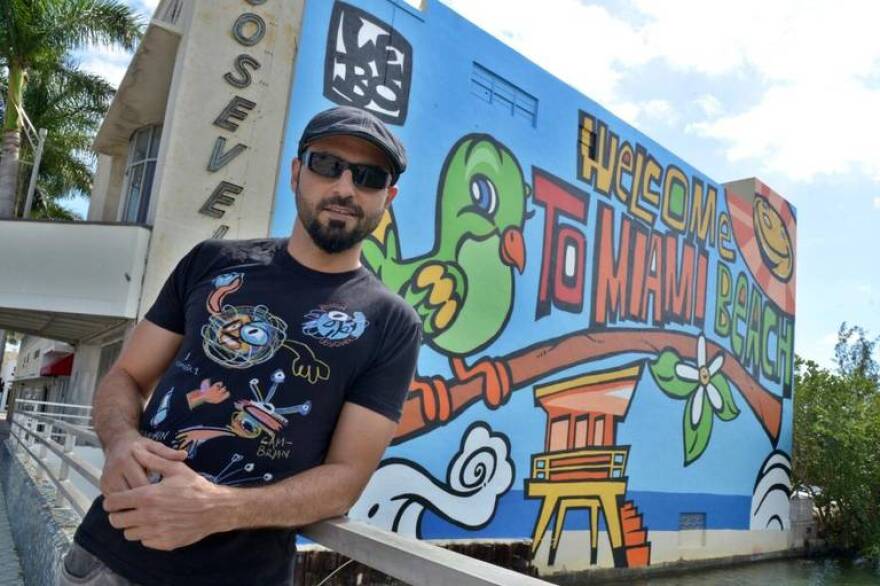David Le Batard, known as the colorful Miami street artist Lebo, died early Tuesday morning at age 50, his older brother Dan Le Batard, host of the popular sports podcast The Le Batard Show, announced.
He was diagnosed with an undisclosed illness about a year ago, his brother said. Dan Le Batard described the loss of his brother, “my best friend for over 50 years,” as “inconceivable.”
“I don’t have a lot of experience with grief, but I had been grieving him for a year,” he said during his podcast. “Because when he was diagnosed more than a year ago, he’s been steadily deteriorating since. And it’s been brutally, brutally hard to watch a poison eat him up from the inside and one of the biggest spirits I’ve ever seen consumed by illness.”
We’re Live ❤️
— Dan Le Batard Show with Stugotz (@LeBatardShow) August 1, 2023
📺 https://t.co/6IwClttgOL pic.twitter.com/0pIaSXllIn
David Le Batard, known for his murals and artworks that often featured adorable cartoon birds, was a well-respected local artist who rose to prominence in his 20s. He proudly called himself a cartoonist, describing his artwork as “Postmodern Cartoon Expressionism,” which combines cartoon imagery, saturated colors and thick lines.
One of his most well-known murals greets Miami Beach residents and tourists as they cross a small bridge on 41st Street. On the side of the abandoned Roosevelt Theater, a smiling green monk parakeet sits on a branch over an orange lifeguard stand and a calm blue ocean. “Welcome to Miami Beach” is emblazoned in bold letters underneath a happy cartoon sun. Completed in 2016, it was the largest mural approved by the city of Miami Beach, according to the artist’s website.
“It sets a tone that [visitors] are somewhere else, in a really special part of the world,” Le Batard told the Miami New Times in 2016. “I want people to happy to be here.”

Le Batard was born in New York to Cuban immigrant parents. When he was 13, his family moved to South Florida to be closer to his grandparents in Little Havana, according to a 2008 El Nuevo Herald profile. He grew up in Hollywood and spent his weekends drinking cafe con leche with his abuela. He was Broward Silver Knight winner for the arts in 1990 and went to Hollywood’s Chaminade-Madonna High School.
READ MORE: Your trash becomes his art. We tag along with 'Ahol Sniffs Glue' who paints and bikes around Miami
Throughout his career, he became a well-respected muralist with a showroom in Wynwood and studio in Miami Beach, according to his website. His art is featured in private collections around the world and he has worked with several brands, including Lulu Lemon, Harley Davidson, Audi, Google, Microsoft, Redbull, Ketel One, Bacardi, and Ferrari. One of his most ambitioius projects was designing the hull of a Norwegian Cruise Lines ship.
Lebo discussed his love for cartoon imagery with a quote on his website:
“My aim in creating is to explore the purest, most spiritual elements of the arts and sciences (from astronomy to history, from music to physics) and to interpret them through the language of cartoons, giving them a unique and vibrant voice. After all, cartoons are a primordial form of expression that have always combined images in order to tell stories. We have only to think of rock paintings, hieroglyphics or religious iconography for our proof. In reality, even when we look at Picasso’s work after 1905, it all becomes very hard-edged yet organic. The very essence of cartooning.”
This story was produced with financial support from The Pérez Family Foundation, in partnership with Journalism Funding Partners, as part of an independent journalism fellowship program. The Miami Herald maintains full editorial control of this work.





